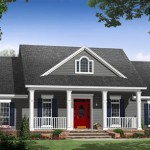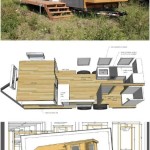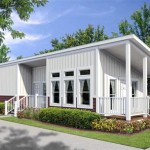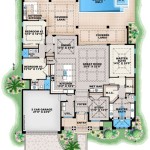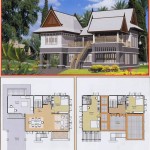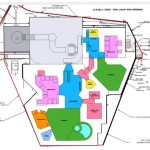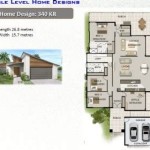House Plans Built In Stages: A Phased Approach to Home Construction
Building a home is a significant undertaking, often representing the largest investment a family will make. For many, the prospect of financing and managing a complete build all at once can be daunting. House plans built in stages, also known as phased construction, offer a viable alternative, allowing homeowners to break down the construction process into manageable, financially attainable steps. This approach involves designing a home with the intention of completing it over time, potentially years, allowing for flexibility in budgeting, labor, and design.
The core concept behind phased construction is the creation of a master plan that outlines the complete, finished home. However, the actual building takes place in defined stages, each addressing a specific portion of the house. This allows homeowners to prioritize essential areas, such as the living space and kitchen, during the initial phase and then add bedrooms, bathrooms, or specialized areas like a home office or workshop in subsequent phases. Careful planning and a well-defined master plan are crucial for the success of this approach.
Phased construction is not suitable for all individuals or situations. It requires patience, careful planning, and a clear understanding of the long-term vision for the home. There are potential drawbacks, such as increased overall costs due to inflation and the complexities of working with different contractors over time. However, for those who lack the upfront capital for a complete build or who prefer to manage the project in smaller increments, house plans built in stages can be a practical and rewarding option.
Financial Advantages of Phased Construction
Perhaps the most significant advantage of building a home in stages lies in its financial flexibility. Instead of securing a large mortgage for the entire project, homeowners can finance each phase separately. This allows them to save money between phases, potentially reducing the amount of interest paid over the long term. It also allows them to adjust the project based on changing financial circumstances. If unexpected expenses arise, the project can be temporarily paused without jeopardizing the entire investment.
Furthermore, homeowners can often utilize a cash-flow approach to financing individual phases. This could involve using savings, selling existing assets, or taking advantage of smaller personal loans. Avoidance of a large upfront mortgage can free up capital for other investments or expenses. The flexibility to phase allows the home builder to build equity in the project slowly, building it over time.
Another financial benefit is the ability to take advantage of fluctuating material costs. Construction material prices can be volatile, influenced by factors such as supply chain disruptions and economic conditions. By phasing the build, homeowners can potentially purchase materials when prices are more favorable, leading to cost savings. They might also be able to slowly purchase items as sales become available.
The staged approach may also allow homeowners to personally contribute labor, thereby reducing labor costs. By dedicating their own time to specific tasks, such as painting or landscaping, they can further minimize expenses and build equity in their home. This requires a realistic assessment of their skills and time availability, as well as a willingness to learn new skills.
Planning and Design Considerations for Staged Builds
Successful phased construction hinges on meticulous planning and a comprehensive design. The master plan must be carefully thought out, considering not only the aesthetic appeal of the finished home but also the functionality and flow of the individual phases. It’s crucial to work with an architect or designer who understands the principles of phased construction and can create a plan that accommodates future additions seamlessly.
One key consideration is the placement of utilities. The initial phase must include provisions for all necessary utilities, such as water, electricity, and sewage, with sufficient capacity to serve the entire completed home. This may involve running extra lines or installing larger-capacity systems than are initially required, adding to the upfront cost but preventing costly rework later on.
Another important aspect is structural integrity. The initial phase must be structurally sound and capable of supporting future additions. This may require reinforcing the foundation or walls to accommodate the added weight and stress of subsequent phases. Careful attention to building codes and regulations is essential to ensure the safety and longevity of the structure.
Consideration should also be given to the aesthetics of the individual phases. While the ultimate goal is a cohesive design, each phase should be visually appealing and livable in its own right. This may involve incorporating design elements that can be easily integrated into the final design or using temporary finishes that can be updated later. The aesthetics should aim to convey that the unfinished project feels like a home and not a construction zone.
In addition, the planning stage needs to consider the phasing of landscaping. While the initial landscaping will likely focus on the immediate area surrounding the completed phase, the master plan should include a comprehensive landscaping design for the entire property. This will ensure that the landscaping complements the architecture of the home and creates a cohesive outdoor space.
Managing the Construction Process in Stages
Managing a phased construction project requires strong organizational skills and effective communication. Homeowners often act as their own general contractors, overseeing the project and coordinating the various tradespeople involved. This can be a demanding role, but it also allows for greater control over the budget and schedule.
Selecting reliable and qualified contractors is crucial for the success of each phase. It’s important to thoroughly vet potential contractors, check their references, and ensure they have the necessary licenses and insurance. Clear contracts should be established outlining the scope of work, payment terms, and timelines for completion. It is wise to set the expectation that future work involving subsequent phases is a possibility.
Effective communication is key to keeping the project on track and within budget. Regular meetings with contractors and subcontractors are essential to address any issues or concerns that may arise. It’s also important to maintain open communication with local building officials to ensure compliance with all applicable codes and regulations.
Maintaining a detailed budget and tracking expenses is also crucial. It’s important to create a realistic budget for each phase and to closely monitor spending to avoid cost overruns. Utilizing project management software or spreadsheets can help track expenses, manage schedules, and facilitate communication.
Finally, it is crucial that the homeowner has a realistic understanding of the time commitment involved in managing a phased construction project. It can be a time-consuming and demanding undertaking, requiring significant dedication and attention to detail. Homeowners should be prepared to invest the necessary time and effort to ensure the project's success.
Building a home in stages presents a unique set of challenges and opportunities. By carefully planning, designing, and managing the construction process, homeowners can create a home that perfectly meets their needs and budget, one phase at a time.

Home Plan To Build In Stages 55166br Architectural Designs House Plans

Small Expandable House Plan Bs 1266 1574 Ad Sq Ft Budget Build In Stages

Tiny Homes Plan 6775

Beautiful Three Bedroom House Plans Blog Floorplans Com

Open Concept 4 Bedroom Ranch House Plans Blog Floorplans Com

Beautiful Three Bedroom House Plans Blog Floorplans Com

Multigenerational House Plans With Apartments Separate Entrances Blog Eplans Com

How To Design A House From Sketch Reality

Mountain House Plans Rustic Modern Floor

Mountain House Plans Rustic Modern Floor

